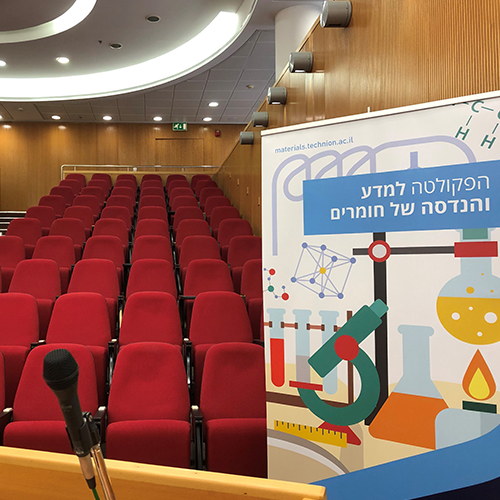
Ms. Olga Freydin - M.Sc. candidate
14/04/2024
ZOOM
14:30
Developing new technology based smart magnetoelectric (ME) composites will allow designing antennas several orders of magnitude smaller, with higher efficiency, while working in lower frequencies. The two-phase ME composite consists of piezoelectric and magnetostrictive phases. ME composite devices convert magnetic energy to electrical energy through a dual-action process. First, magnetic energy is converted to mechanical energy via magnetostriction in the magnetic part of the ME composite. Simultaneously, this mechanical energy is subsequently transformed into electrical energy via the piezoelectric component, through strain coupling. For example, a simple geometry can be a laminate structure: 2 films (or more) connected at their faces. The ME coupling is mediated by mechanical strain through the interface between the 2 phases. Therefore, we expect the geometry at the interface to have a great effect on the ME device performance. We examined the effects of ME composites interfacial geometry on the ME coupling and analyzed in depth the possible causes of these effects, by performing simulations in COMSOL. COMSOL is a leading finite element simulation software, with a strength in multi-physics problem solving. The composite’s performance, operational frequencies, and resonance frequencies were studied as a function of the microscale features of the interface. In this seminar we will present our results and further discuss the challenges in developing a well validated ME model in COMSOL that compares well with experimental results.


